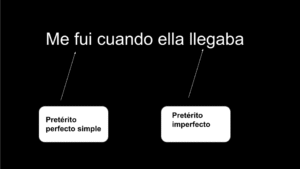 The imperfect tense in Spanish can be complicated for English speakers, as it doesn’t have a perfect equivalent in English. While English uses “used to” or “was/were + verb -ing” to express past actions, Spanish employs a specific tense with unique conjugations. Continue reading “The Imperfect Tense in Spanish: a Challenge for English Students”
The imperfect tense in Spanish can be complicated for English speakers, as it doesn’t have a perfect equivalent in English. While English uses “used to” or “was/were + verb -ing” to express past actions, Spanish employs a specific tense with unique conjugations. Continue reading “The Imperfect Tense in Spanish: a Challenge for English Students”
Category: Spanish Grammar
The Gender of Nouns in Spanish
 Knowing the gender of nouns in Spanish is complicated for English speakers. I remember a friend who told me that when she started studying Spanish at college, she decided not to continue with this subject because she would never understand how a pencil could be masculine and a pen feminine if both objects were for writing and had more or less the same elongated shape. Good reasoning, but as I always tell my students, languages are not an exact science where two plus two equals four.
Knowing the gender of nouns in Spanish is complicated for English speakers. I remember a friend who told me that when she started studying Spanish at college, she decided not to continue with this subject because she would never understand how a pencil could be masculine and a pen feminine if both objects were for writing and had more or less the same elongated shape. Good reasoning, but as I always tell my students, languages are not an exact science where two plus two equals four.
The Subjunctive Mood: Comparison between Spanish and English
 Introduction to the subjunctive mood
Introduction to the subjunctive mood
The subjunctive mood in Spanish is a fundamental aspect of Spanish grammar and plays a crucial role in expressing emotional states, wishes, doubts, and hypothetical situations. Unlike the indicative mood, which is used to state facts and concrete realities, the subjunctive allows for communicating uncertainty, desires, or unfulfilled conditions. Understanding the use of the subjunctive is essential for mastering the Spanish language, as its correct application significantly improves communication and cultural understanding. Continue reading “The Subjunctive Mood: Comparison between Spanish and English”

 Introduction to the subjunctive mood
Introduction to the subjunctive mood